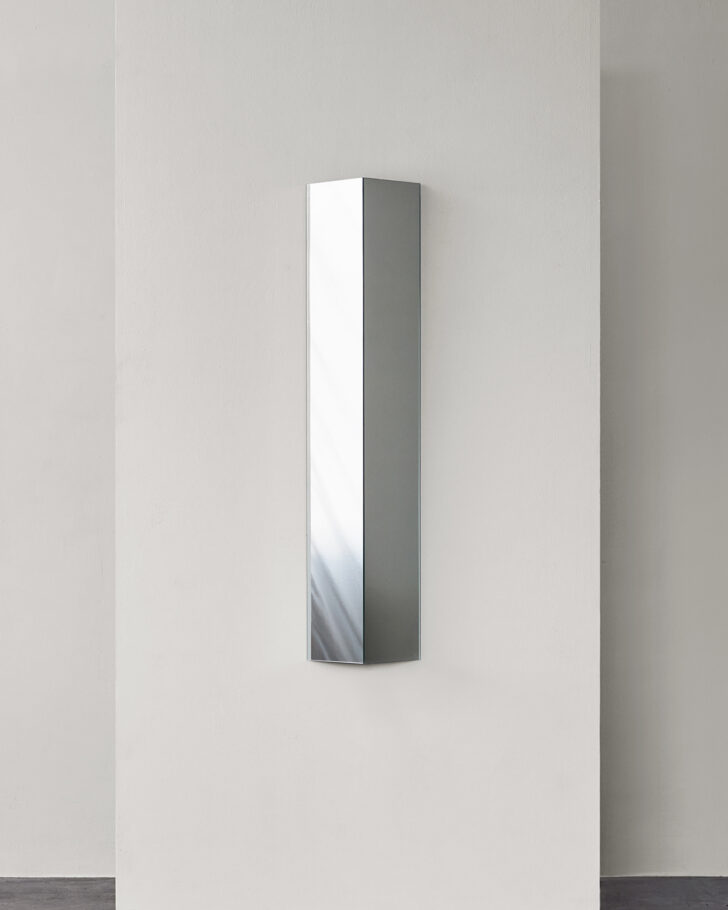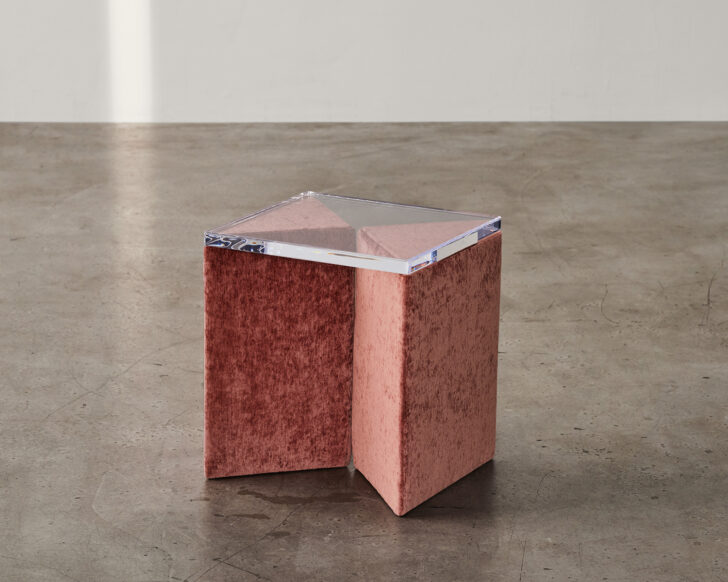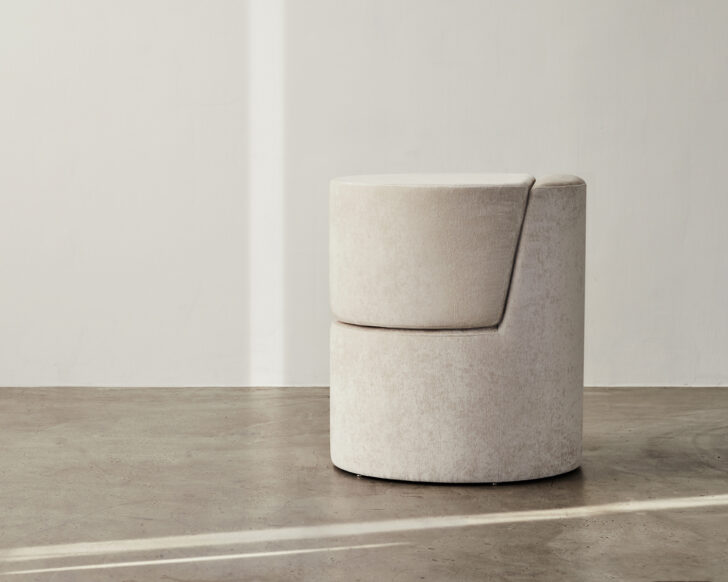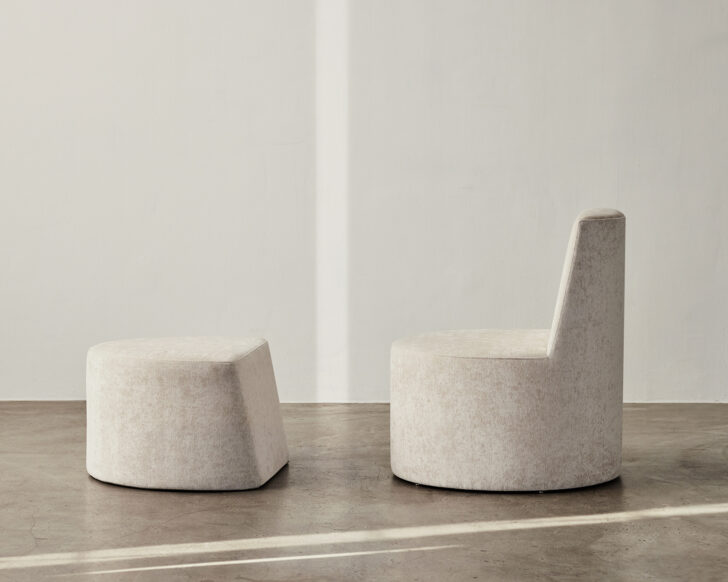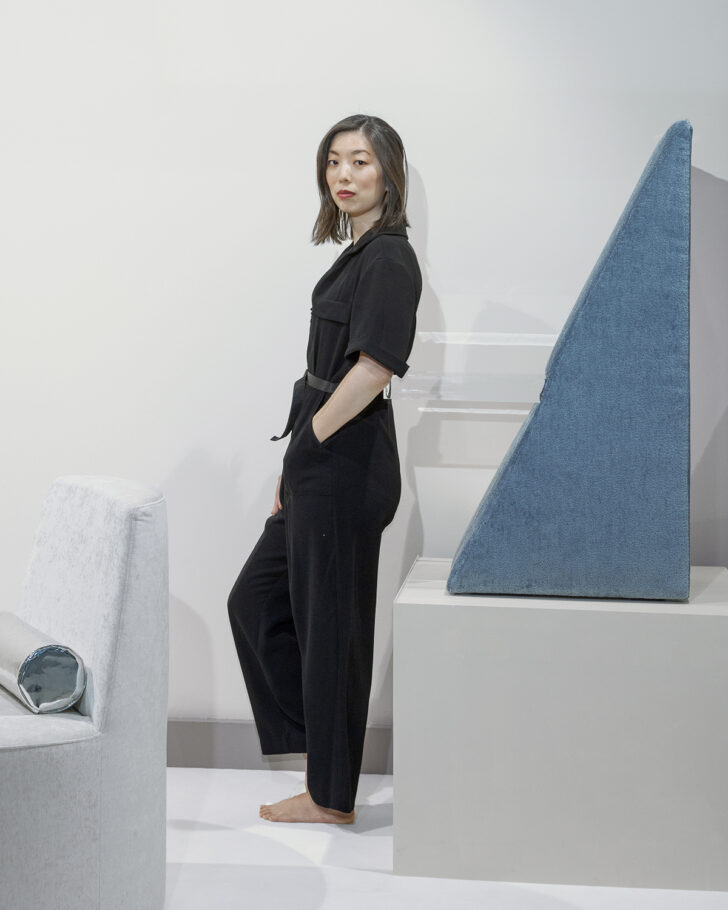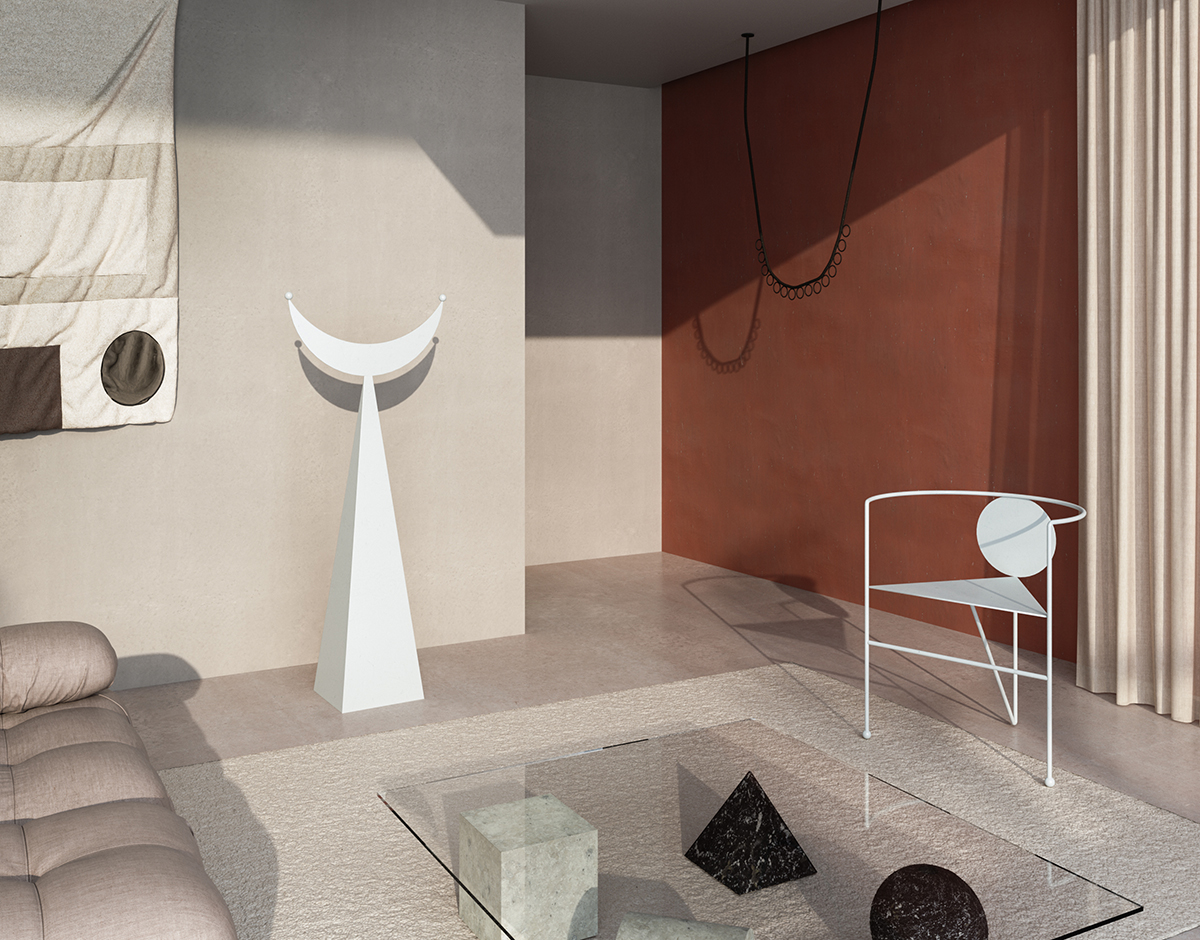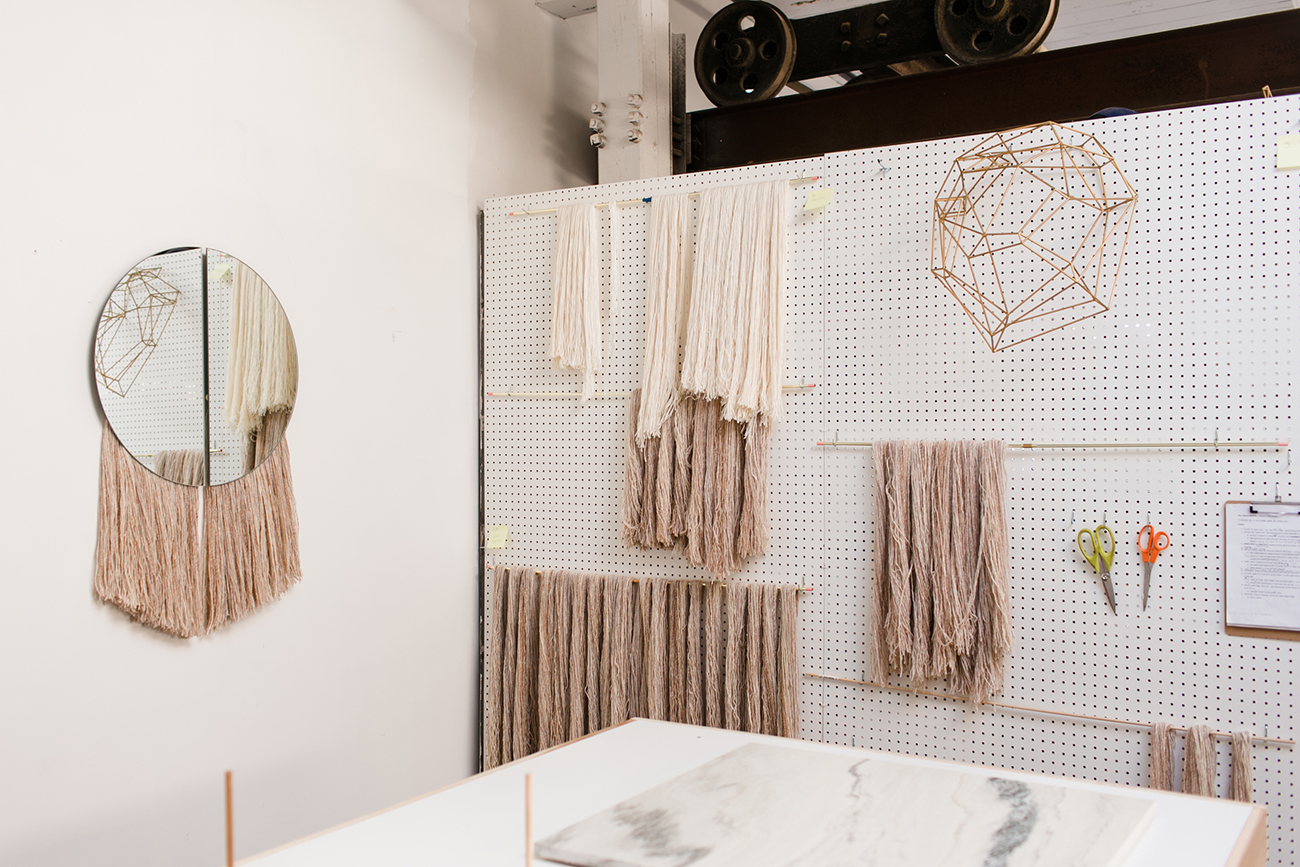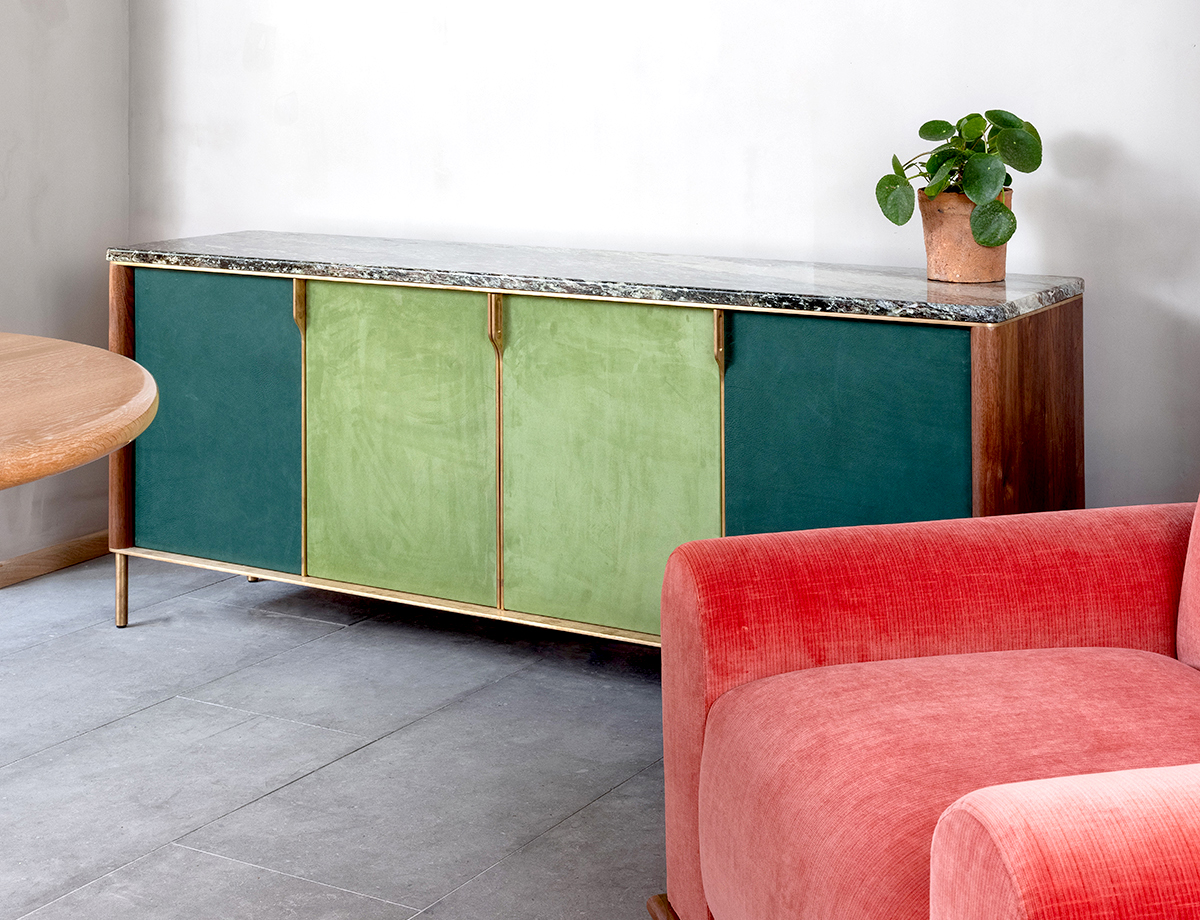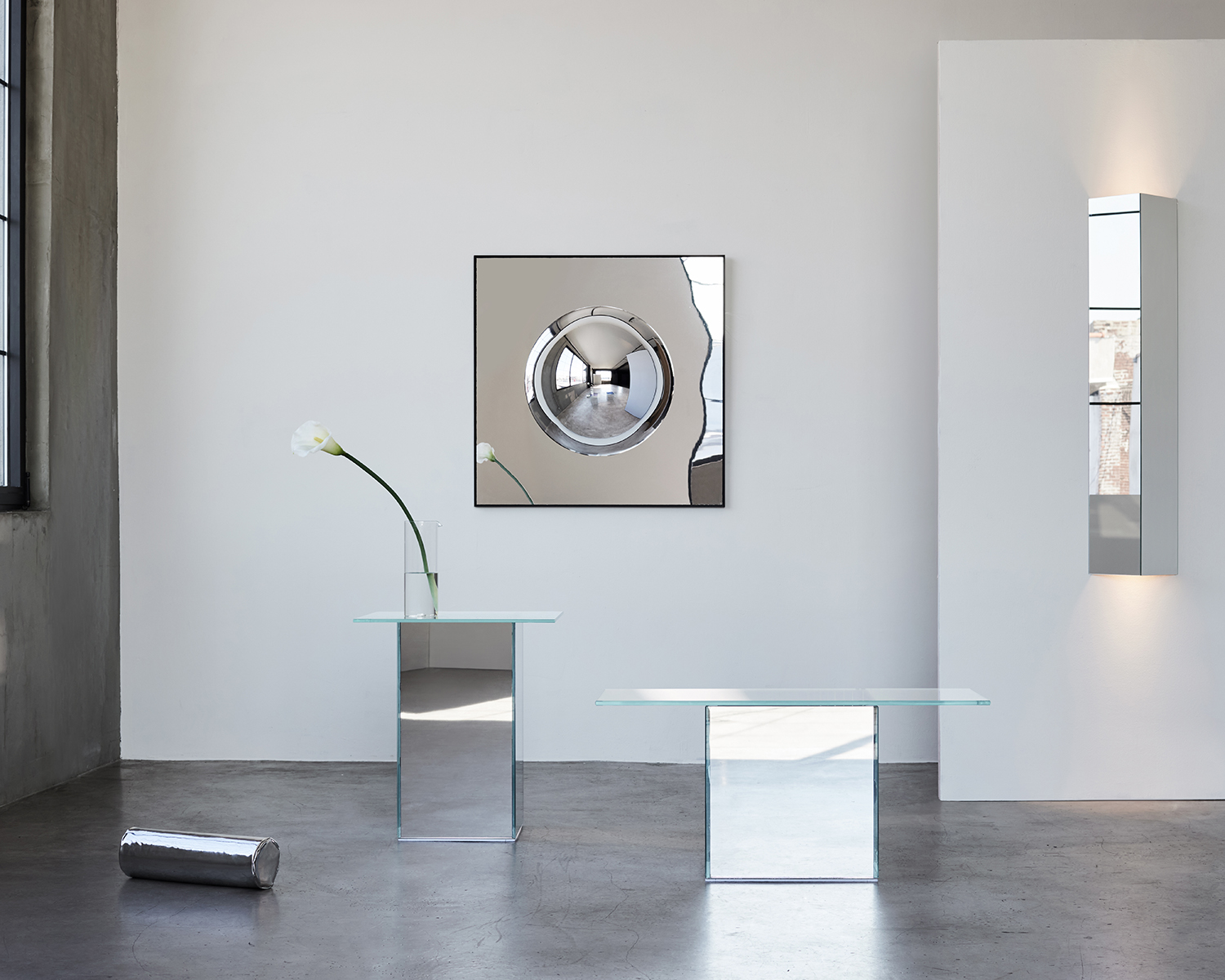
05.30.23
Up and Coming
Caroline Chao Uses Glass, Mirror, Lucite, and Light Itself to Create Optical Illusions in Her Furniture Debut
The nature of furniture is participatory — chairs invite us to sit, tables to gather round — but this holds especially true for the work of New York–based designer Caroline Chao. Her pieces engage our powers of interaction and perception — perhaps because in addition to the glass and Lucite she uses, light itself is a kind of material for her. Her attunement to light owes a good deal to growing up in the Bay Area, “surrounded by a wealth of natural landscapes — from the ocean and cliffs to the redwoods and the Sierras, and all these lakes, lagoons, and bays in between,” Chao says. “I realized that I was moved by the effects of light across this diversity of landscapes, which constantly and dynamically shift throughout the day and season.” Her VIEW Collection (above), which at launched at ICFF last week, is a study in reflective surfaces and unexpected, illuminating depths. The sleek coffee and side table, orb-like wall mirror, and lights offer up surprising optical effects depending on your vantage point. Chao launched her other debut collection, BLOC, in Milan this past April. It references the nostalgic geometric forms of children’s building blocks but with an edge and sophistication: A pristine, transparent rectangular slab, for example, is set into an upholstered velvet cube as a backrest and into a tall triangular wedge as the seat itself. Or, as is the case with the Cylinder Lounge, two pieces can be fitted together in a squat column and then placed apart to form a chair and corresponding ottoman.
Chao committed to starting her own studio, From: C after moving to New York last year. “It felt like the culmination of many things aligning for me. I had a lot of philosophical design ideas that had been ruminating for a while, and I made time to realize them in a physical way.” Highly trained — with an undergrad degree in architecture and fine arts from Penn and a Masters in architecture from Harvard — Chao began her working life at large architecture offices that built skyscrapers. Eventually she realized she was “much more interested in designing at a smaller scale. It was difficult for me to engage with a high-rise — it often becomes a sculptural form best viewed from a distance, rather than something you can directly and intimately connect to.” Focusing instead on single-family homes and interiors allowed her to “design something that people could engage with on a more personal level.” After working on built-ins and custom furniture, Chao took the leap into furniture design.” Over email, Chao elaborated on how her practices inform each other, the process of re-contextualizing materials, changing the notion of a what “good view” is, and more.
PHOTOS BY PIPPA DRUMMOND
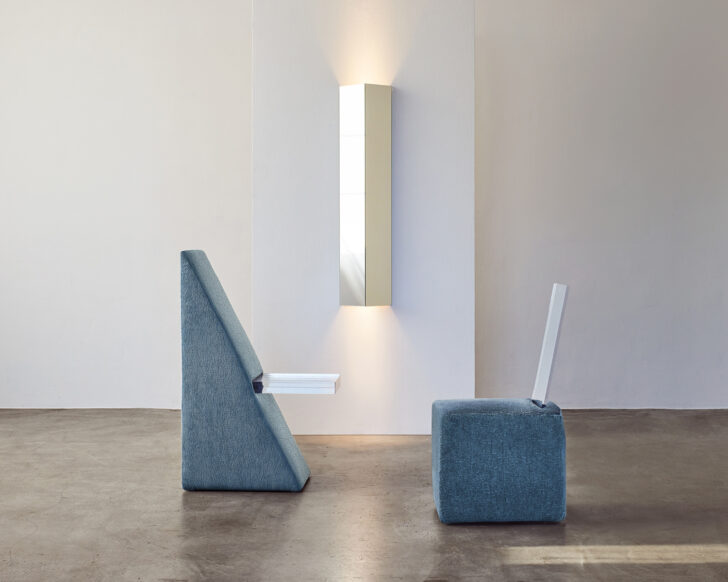
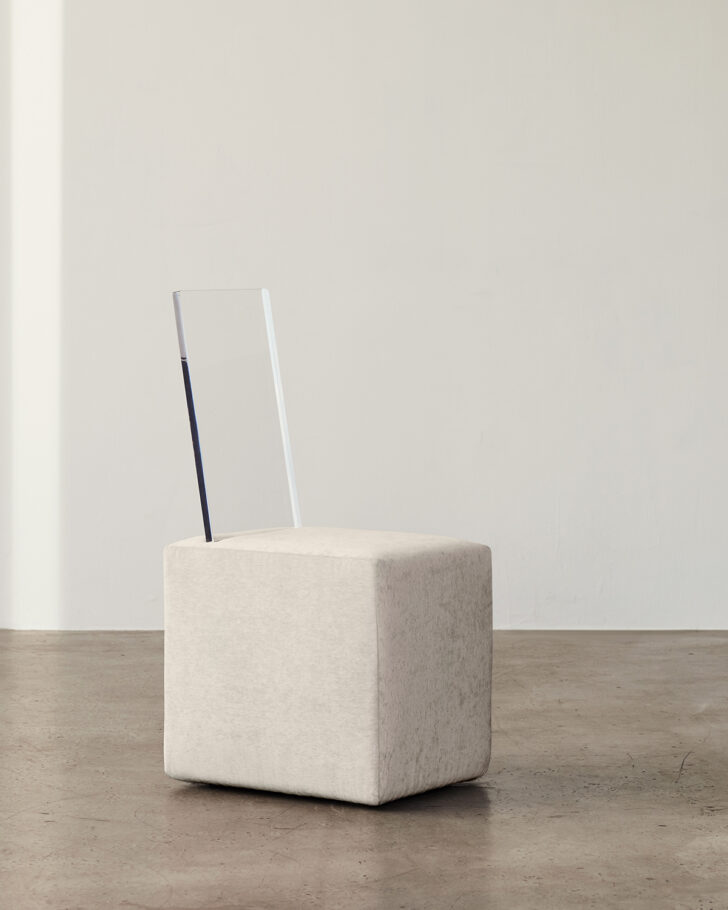
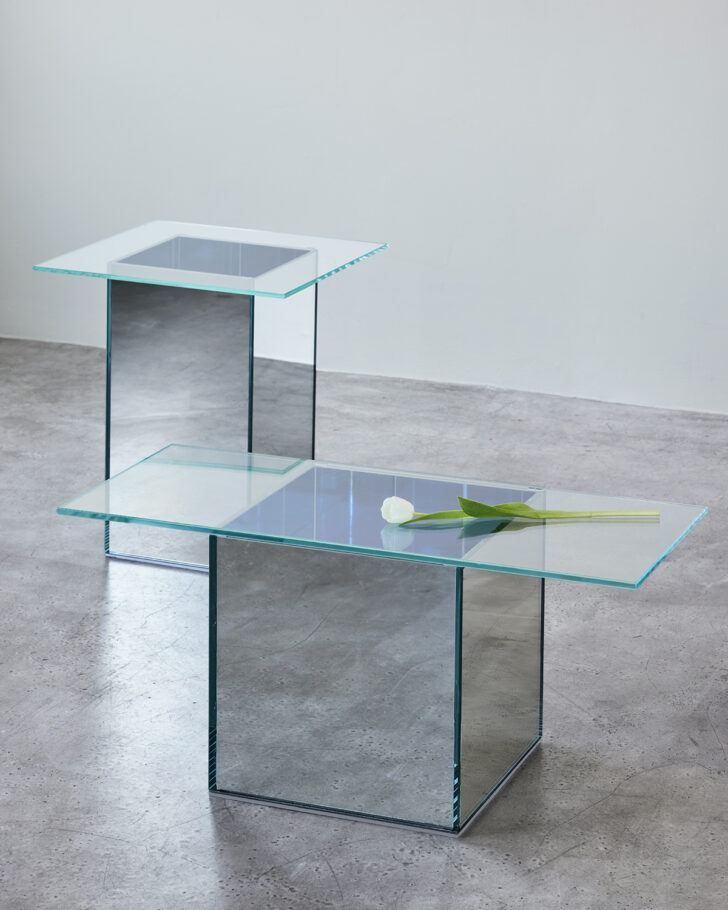
Tell me a bit about the path you’ve taken to get where you are now, professionally.
My first love was art, but for me, it felt a little too open and free. I was attracted to architecture because it combined art with the constraints of physical realities like site, access, usability, etc. And then, after working as an architect, I realized that the number of constraints often made it difficult to get a concept across with clarity, and the focus often shifted to problem-solving for many, very important technical realities. I feel that interiors and furniture exist in a middle zone, with a certain number of constraints but at a small enough scale that those constraints don’t often overwhelm a project.
How does your background in architecture influence your design work?
I have always been drawn to the effects of light and space on how we perceive our surroundings. Architectural ideas of views, light, and space are perhaps less commonly discussed in furniture, but are very present themes in my pieces. The recent furniture collections are a culmination of years of thinking about ideas in architectural perception. I like to think of each piece as a singular idea or spatial effect if you were to extract a discrete moment within a building or architecture.
For example, the original goal of the VIEW collection was to bring views into the interior of objects and spaces, and to celebrate interior views. A “good view” is often associated with exterior views of the city skyline, of the ocean, or of landscapes. They are thus traditionally associated with wealth or luxury real estate. I’d love to encourage us to see views differently, and to appreciate interior or unexpected views. While furniture typically hides its interior structure, the VIEW Coffee and Tea Tables create an interior view visible through the clear glass tabletop. This view dynamically changes throughout the day according to its placement, time of day, and light conditions. My hope is that we can start to see and appreciate our spatial surroundings in new and unexpected ways.
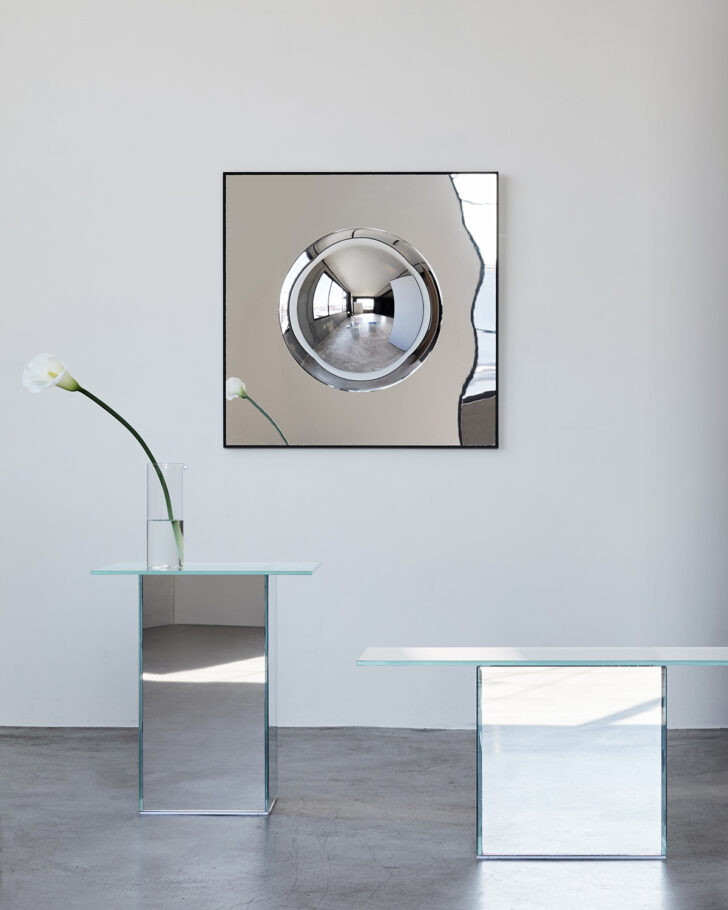
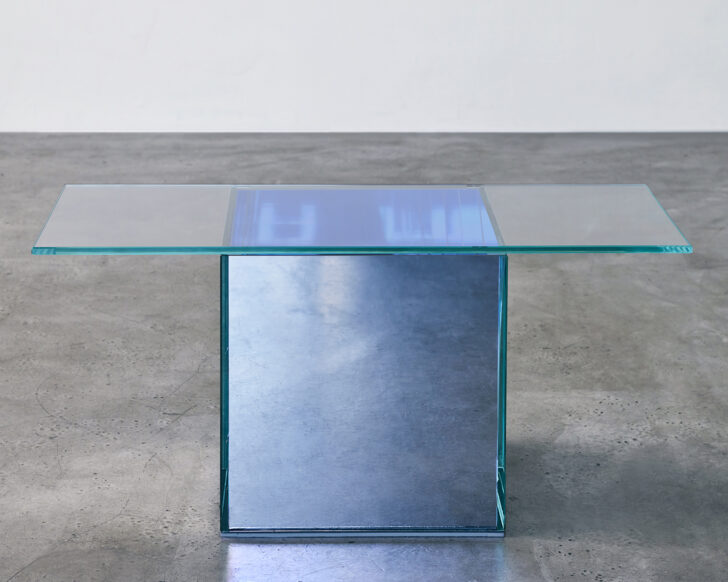
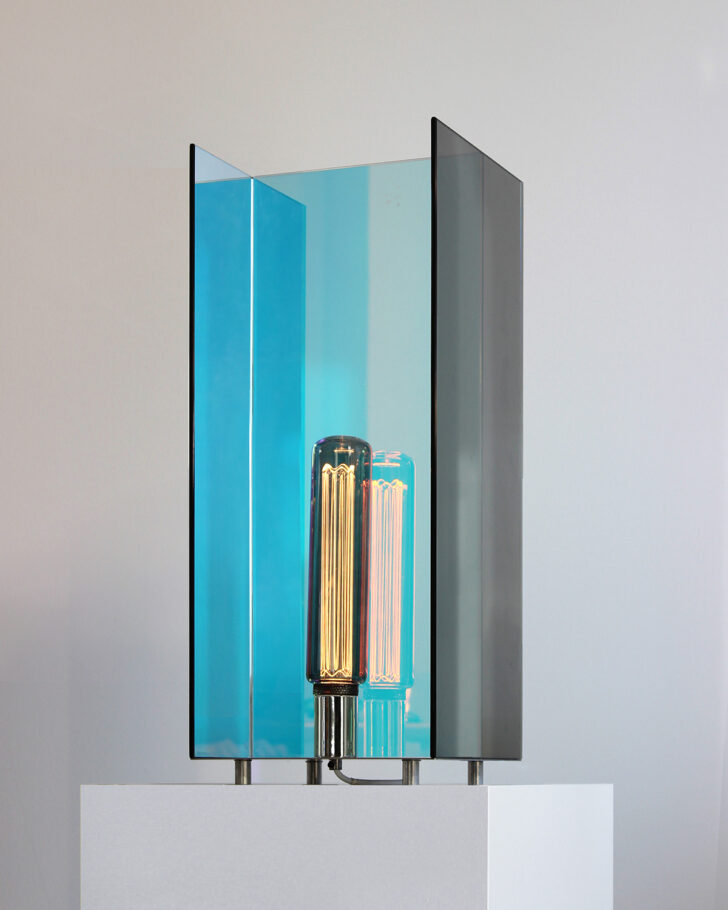
With the VIEW collection and the Lucite slabs in the BLOC collection, it seems like you’re drawn to materials that interact with light, that play with transparency and reflection.
There was a moment a few years ago when I realized that light is the single most important and affective characteristic in perceiving space. When we see objects in space, we are really just seeing light reflected off their surfaces in different ways, or light scattered through a substrate like air or water. So it made sense to me that if I were to explore perception, the first quality to experiment with would be light. Mirrors, Lucite, glass, and dichroics are all materials which are ripe for this exploration.
What’s your design process like?
I almost always start with reading, thinking, and writing down phrases around a certain idea or topic, then gradually forming those into a loose concept which I can start to sketch and translate into a form. Depending on how complex the piece is, I generally move to digital modeling and rendering to get a more accurate sense of how qualities of light, reflections, and form might interact. Lastly, the digital model then needs to be translated into physical form, which involves figuring out tolerances, sourcing suitable materials, assembly of parts, and figuring out detailing and construction. The translation from intangible concept to physical form is always the most difficult part, but also the most rewarding.
Which designers or design eras particularly inspire you?
I have deep respect for pioneering women like Hilma af Klint and Nanda Vigo. They both had very particular visions for their work and weren’t afraid to march to their own beat, even if it meant that the work was highly unusual or even looked down upon at the time, particularly in the case of Hilma af Klint. Putting work out into the world takes a lot of courage, but even more so when it may not align with the current trends or preferences of the day.
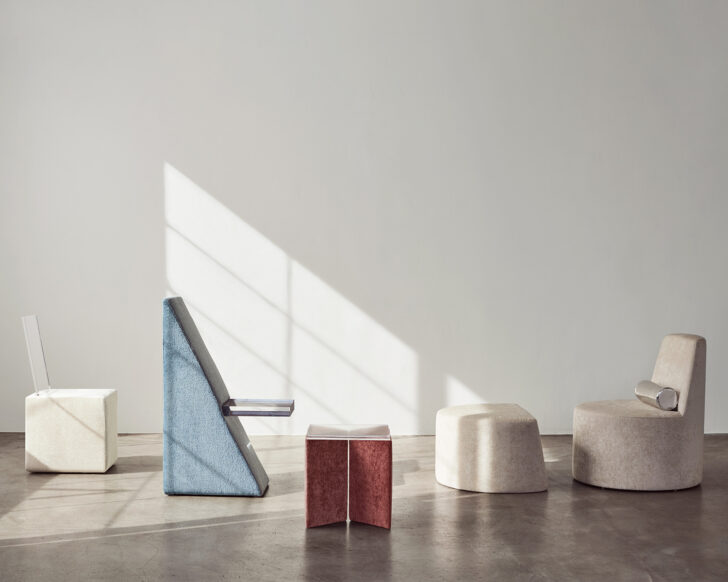
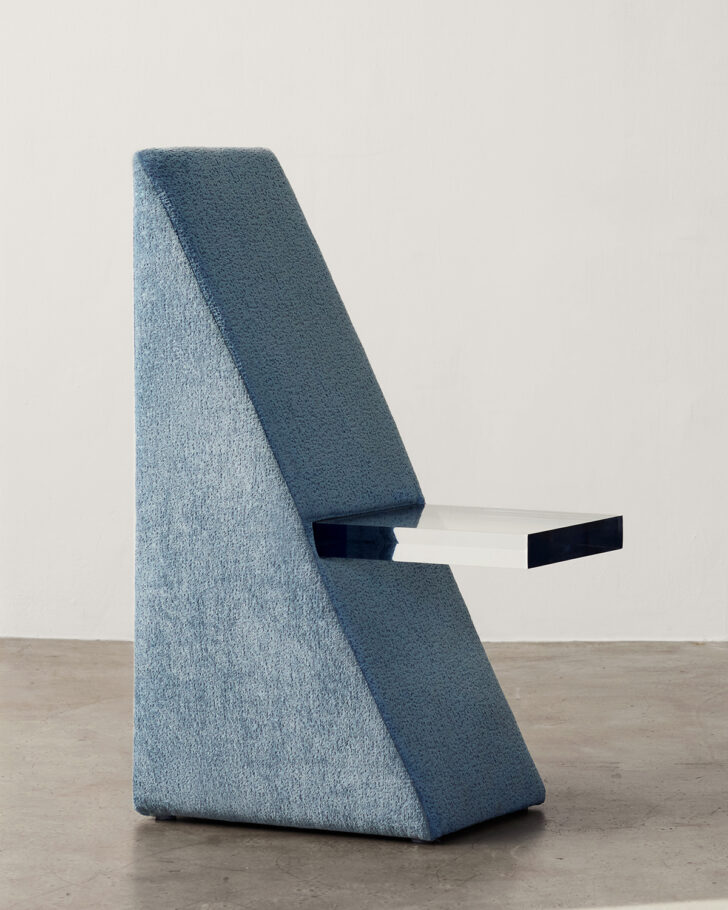
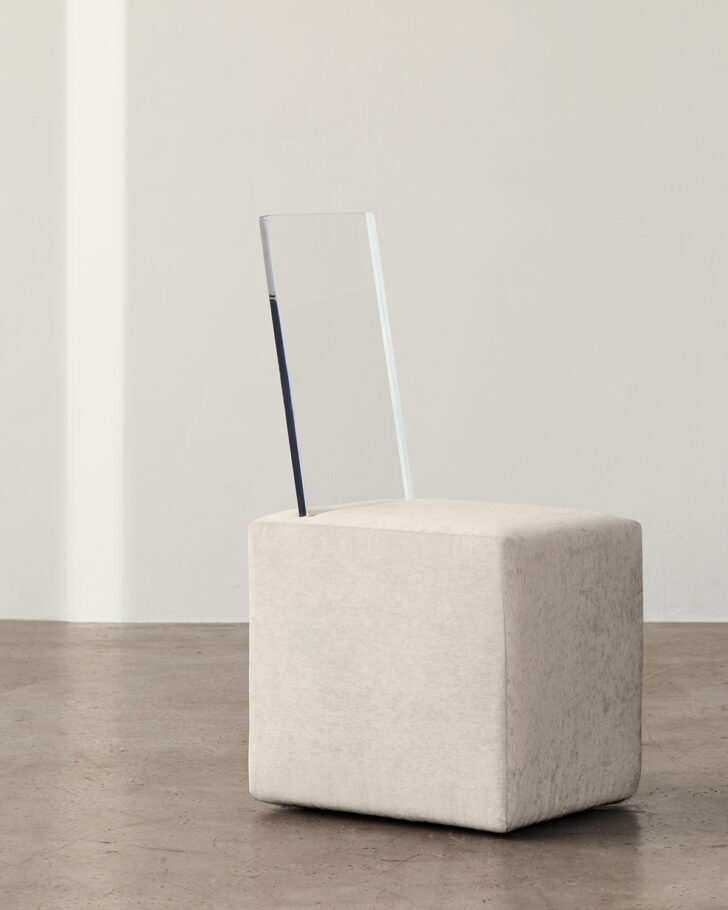
What’s been influencing you lately?
Recently I’ve been interested in how to create dynamic effects from everyday or overlooked materials, such as industrial machine parts, security and search mirrors, parking equipment, and off-the-shelf components, and exploring how these might have specific exceptional qualities to be highlighted and used in unique ways.
VIEW Collection espouses this belief that extraordinary or dynamic effects can be created from simple or overlooked materials. The collection uses primarily glass and mirror which are both common and widely accessible materials, as well as industrial components, which are combined and juxtaposed in deliberate ways to create unique visual effects. Every piece is dynamic and affective in some way — colors change as you move around them, a reflection may appear different or multiply when viewed from a different angle, or the piece may create an optical effect that displaces or distorts your reflection in a surprising way. For example, some of the pieces highlight specific exceptional qualities found in security mirrors or one-way mirrors, which are primarily known for being used in police interrogation rooms. Then those qualities are highlighted in order to create something different entirely. Oftentimes, viewers are surprised to learn of the origins of the components, as the final piece removes them from a recognizable context.
What’s next? Where would you like to see From: C go in the future?
I’m currently working on a collaboration with a retailer to launch a furniture collection, with a focus on wood and woven pieces celebrating the hand of the maker. It’s incredibly exciting to work with a talented team to realize designs at a scale that simply wouldn’t be possible on my own.
In terms of a broader perspective, until recently most of my work has been either exclusively interior architecture or furniture design. I’d love to merge the two in more meaningful ways because they have the capacity to be so integrally related in a single practice, informing and in conversation with each other, and exploring concepts more deeply through different scales.
